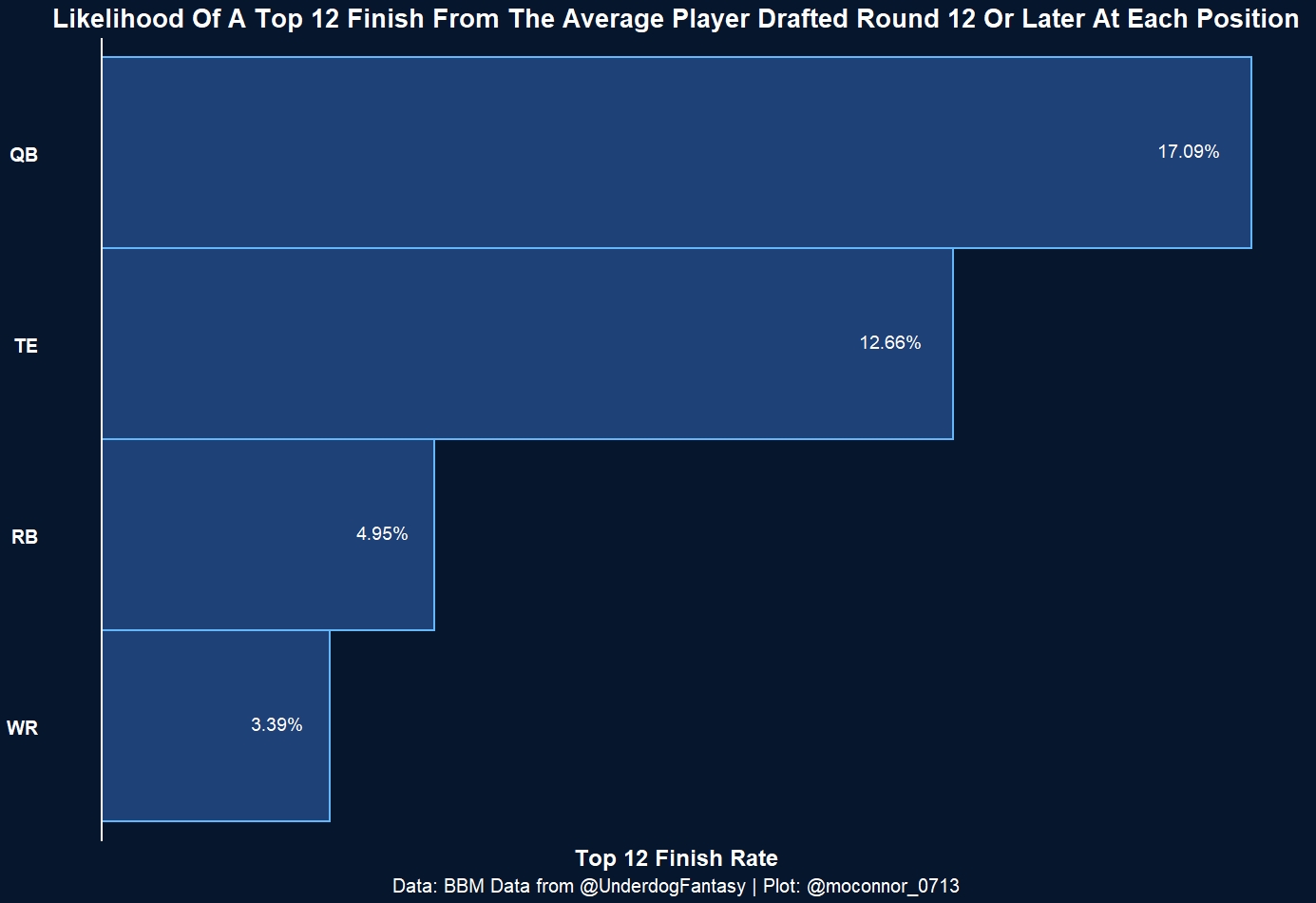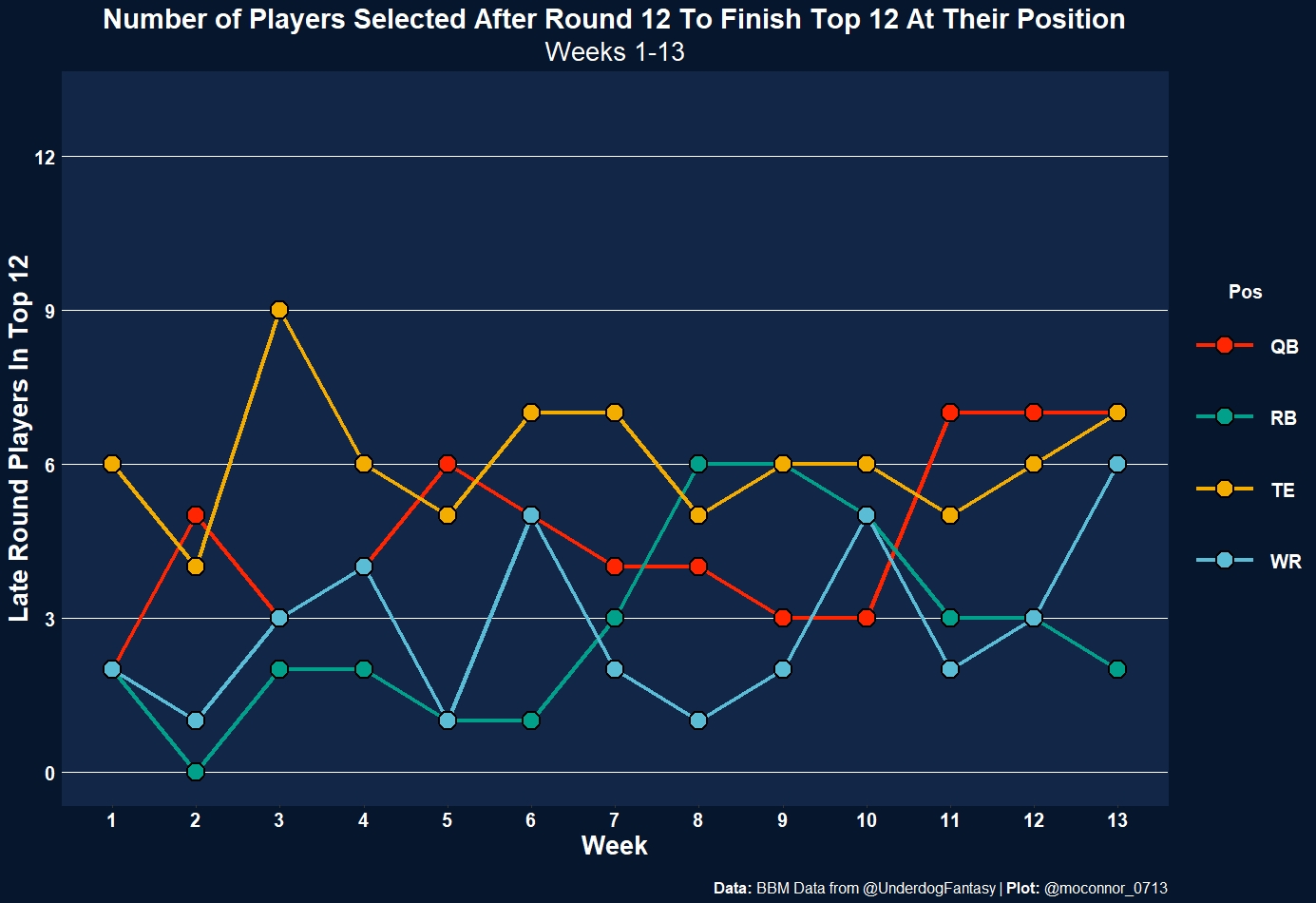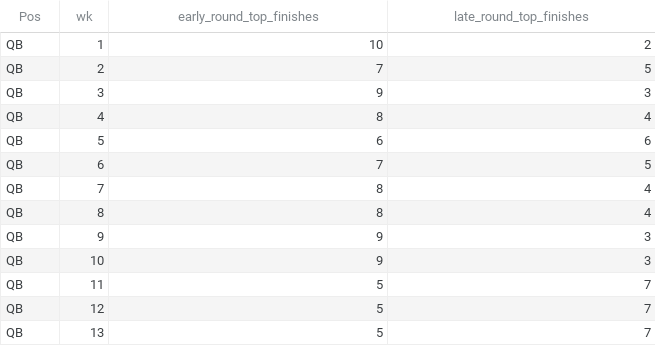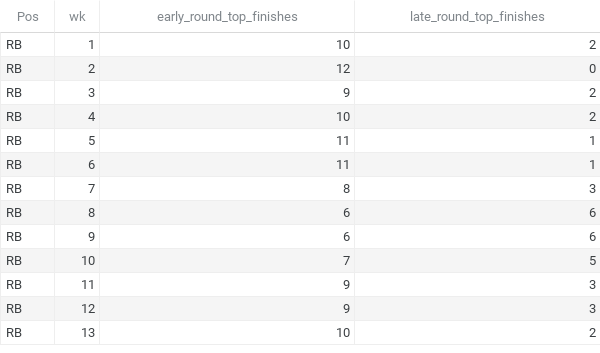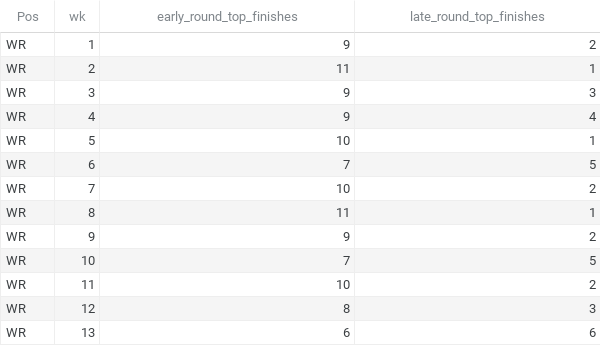Best Ball leagues on Underdog Fantasy are gaining popularity at an astronomical rate. With that, a wave of strategy-based content has flooded the market in 2021. The biggest debate of the offseason is between Zero RB and Robust RB drafters. The goal of this article is to address one key point of debate concerning draft strategy:
Is Wide Receiver as “deep” as many suggest in fantasy drafts?
I plan to answer this question with the help of RotoUnderworld data intern Michael O’ Connor, as well as PlayerProfiler’s advanced stats and metrics.
Setting the Stage
The mainstream argument for Robust RB drafting claims that wide receivers hit more often than running backs in the late rounds. The argument is propped up by the large quantity of late round options at wide receiver. Robust RB is a fine draft strategy, Anchor RB/Zero RB have a place in Best Ball championship circles.
The one-off positions (quarter back/tight end) and running back are considered to have “shallow” depth in drafts. This misconception results in players drafting multiple TEs and QBs in the early rounds to “lock up” the position.
Statistical Analysis
For this breakdown, let’s consider any players drafted outside the top 12 rounds to be “late round” picks. These players fall outside of the top 144 overall players selected for a standard 12-team league. In Best Ball, the goal is to draft players who will enter your weekly starting lineup. And to win a Best Ball league, you want top 12 finishes at each position. An analysis of total top 12 finishes for players drafted after Round 12 in 2020 shows the following results:
Looking back to 2020, both running back and wide receiver proved to return subpar value in the deep rounds. Running backs drafted after the 12th round finished as an RB1 only 4.95-percent of the time. Wide receivers drafted in the same range were only a WR1 3.39-percent of the time. The fall off is drastic compared to quarterback (17.09-percent) and tight end (12.66-percent).
This suggests that QB and TE are actually deep and that WR/RB are the shallow positions in drafts.
The one-off positions are considered “shallow” because there are less starting options, yet the known starters consistently get pushed back to the late rounds.
Case Studies
The data studied is explained when diving further into individual player performance. Let’s make the assumption that a drafter selects a stud quarterback in the first eight rounds. There is more value in drafting QB depth after Round 12 rather than hammering a second or third QB early on. Comparing the 2020 game logs for Matthew Stafford (ADP: No. 99 overall) and Derek Carr (ADP: No. 226) makes a strong case for waiting on your QB depth.
Stafford was drafted often as a QB2, and even a QB1, yet he only surpassed 20 points on four occasions and finished as a low-end QB2 on a per-game basis, averaging 16.7 (No. 21 among qualified quarterbacks) Fantasy Points Per Game.
Carr had five weeks with over 20 points and finished just ahead of Stafford as the QB18 on a per-game basis, averaging 17.4 (No. 18) FFPG. Even a bad quarterback like Daniel Jones (13.4 FFPG, No. 29) finished with two games over 20 points, with a 19.4-point performance in Week 1 added in.
Running Back and Receiver Depth
When looking at late-round running backs and wide receivers, the usable weeks diminish quickly compared to top performers. J.D. McKissic (2020 ADP: No. 330) finished as the RB24 in half PPR formats, yet he only eclipsed 15 points twice.
Notable late-round breakouts at receiver include Corey Davis and Laviska Shenault. Davis was drafted as the 225th overall player and finished as the WR31 in half PPR. Despite his soft breakout, he only scored 15-plus fantasy points three times. His top 32 finish was largely supplanted by a 29-point performance in Week 13 against the Browns. Shenault (ADP: No. 246) is considered a hit with a WR47 finish, yet only surpassed 15 points once and it was in Week 17.
Late Round Tight End
Late round tight end becomes a viable strategy when considering the overall landscape of the position. Tight end scoring from TE3-TE19 provides little differences in half PPR. Travis Kelce and Darren Waller each finished with over 200 fantasy points, the next highest TE was Robert Tonyan with 150 points. Tyler Higbee finished as TE18 with 106.5 points. The 40-point difference in scoring does not justify the difference in ADP between early-round TEs and late-round options in 2021.
On Underdog Fantasy, there are about 15 tight ends currently being drafted in the top 12 rounds. It is reasonable to expect about half of them to bust in 2021. A conservative projection would suggest that there are at least five available after Round 12 that can score at least 100 points. With the overall poor quality of the tight end position, it is reasonable to push off chasing TE depth until the later rounds in Best Ball.
The Dart Analogy
Michael O’Connor compared these results to a game of darts:
“Imagine you’re playing a game of darts. You have to select one to throw at random and have the option to choose from two sets of darts. One set has 10 darts, with each dart having a 20-percent chance of hitting the bullseye; the other has 40 darts, with each dart only having a 5-percent chance of hitting the bullseye. In each case, you can expect two darts to hit the bullseye, though the first set provides you with less darts to choose from and a higher chance that you’ll choose correctly. Statistically speaking, having less choices neither helps nor hurts your chances of choosing correctly if you know the rate of success. From a fantasy perspective: however, having less choices helps ease the decision-making process, especially in short drafts where you only have 30 seconds per pick.”
Conclusion: The Anchor EVERYTHING Draft Strategy
Anchor RB is a popular draft strategy that focuses on landing one stud RB before hammering WR early. Robust RB suggests that WR is deep enough that one’s focus in the early rounds should be on running backs. Value based drafting prompts players to simply pick the best player available at each slot.
My suggestion is the Anchor Everything Draft Strategy. Stud players at any position provide an edge in Best Ball. Get one stud QB, 1-2 stud RBs, one stud TE, and pepper in plenty of early-round WRs. QB and TE are the deep positions because there are starters available so late in drafts. Most RBs/WRs drafted after Round 12 are projections or backups. Load up on skill positions early and soak up value at the one-off positions late.

